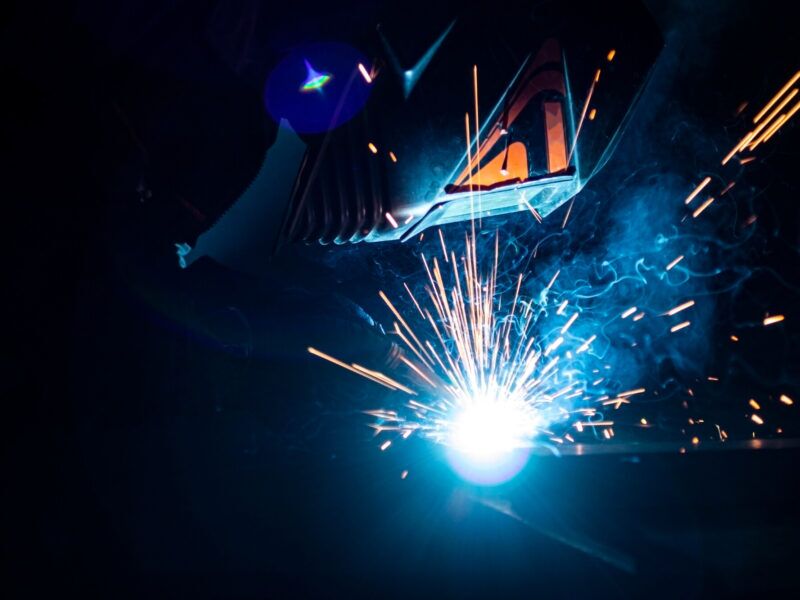Comprehending the Causes and Solutions for Undercut Welding in Metal Fabrication Processes
In the world of metal manufacture processes, the occurrence of undercut welding positions a significant obstacle that requires a detailed understanding of its causes and viable options. The elaborate interaction of various variables during welding procedures can cause this unfavorable phenomenon, influencing the architectural integrity and general high quality of the bonded joints - Preventing weld undercut. By exploring the root triggers of undercut welding and exploring reliable remedial actions, producers can boost the requirement of their workmanship and make certain the manufacturing of flawless steel elements
Typical Reasons For Undercut Welding
Frequently neglected in steel manufacture, undercut welding takes place due to different elements that require careful attention and competence to be properly reduced. Additionally, inappropriate welding methods, such as using the wrong welding angle or travel rate, can also add to undercut development. The selection of welding parameters, such as voltage, current, and cord feed rate, plays a significant role in the incident of undercut welding.
Influence of Incorrect Welding Parameters
Unreliable welding parameters can considerably jeopardize the honesty and high quality of welded joints in metal fabrication procedures. The influence of incorrect welding criteria shows up in different methods, causing structural weak points and flaws in the welded parts. One critical facet influenced by inappropriate welding criteria is the penetration deepness of the weld. Inadequate warmth input due to low welding currents or exceedingly high traveling speeds can result in insufficient combination between the base steels, bring about incomplete joint penetration and weakened bonds. Conversely, extreme heat input brought on by high welding currents or slow-moving travel rates can result in excessive and burn-through reinforcement, developing a weak and unsteady weld framework. Furthermore, incorrect specifications such as incorrect voltage setups or wrong electrode angles can contribute to erratic weld bead profiles, absence of blend, and boosted possibilities of defects like damaging. Thorough attention to welding specifications is paramount to make sure the manufacturing of top quality welds with the wanted mechanical residential or commercial properties and architectural integrity.
Impact of Improper Lantern Angle
Incorrect torch angle in welding operations can dramatically influence the high quality and stability of the final weld joints in steel manufacture procedures. Damaging is a typical welding problem where a groove forms along the weld toe, damaging the joint and endangering its structural integrity.
A lantern angle that is also steep can result in inadequate penetration, insufficient blend, and raised spatter. On the various other hand, a torch angle that is as well shallow can result in extreme infiltration, burn-through, and distortion of the base product. Preventing weld undercut. Correct lantern angle is essential for ensuring regular weld high quality, strength, and look
To avoid undercutting and various other flaws brought on by improper lantern angles, welders should be trained to keep the appropriate lantern angle throughout the welding process. Regular monitoring and change of torch angles throughout welding can assist achieve audio welds with very little defects.
Duty of Inadequate Welding Methods

An additional facet of insufficient welding methods is incorrect weld prep work. Poor cleansing of the base steels, inaccurate joint style, or inadequate edge prep work can all add to damage welding. Inadequate securing gas insurance coverage or using the incorrect kind of gas can result in insufficient blend and the formation of undercut defects.
To deal with the role of inadequate welding techniques in metal construction procedures, it is essential to give thorough training for welders. Appropriate education on welding parameters, joint prep work, and shielding gas option can aid avoid undercut welding and ensure high-quality welds in metal manufacture jobs.
Effective Solutions for Undercut Welding
Resolving undercut welding in metal fabrication calls for executing reliable options to enhance weld high quality and structural stability. One of the primary remedies to deal with undercut is to adjust welding specifications such as voltage, current, and travel rate to guarantee correct warm input and blend. By fine-tuning these settings, welders can protect against excessive melting of the base steel and filler material, lowering the possibility of undercut development.
Additionally, appropriate joint prep work is important in protecting against undercut. Guaranteeing tidy base metal surfaces without contaminants and utilizing the appropriate bevel angle can help promote far better weld infiltration and decrease the danger of undercut - Preventing weld undercut. Using suitable welding methods, such as oscillating the torch or weaving, can also help in dispersing go to this site warmth uniformly and loading the weld joint sufficiently, decreasing the possibility of undercut problems
Moreover, picking the proper welding consumables, including electrodes and filler metals, is vital in alleviating undercut. Making use of products with appropriate chemical structures and mechanical residential or commercial properties can add to accomplishing audio welds with marginal undercut. Normal examination and quality control measures should also be executed to discover and attend to undercut problems without delay, ensuring the try these out overall integrity of fabricated steel elements.

Final Thought
To conclude, comprehending the causes and services for undercut welding in metal fabrication procedures is essential for accomplishing top quality welds. By resolving typical causes such as incorrect welding parameters, inappropriate lantern angle, and insufficient welding techniques, welders can prevent damaging and guarantee strong, durable welds. It is important to take notice of these variables and carry out effective solutions to boost the general welding process and last product quality.
